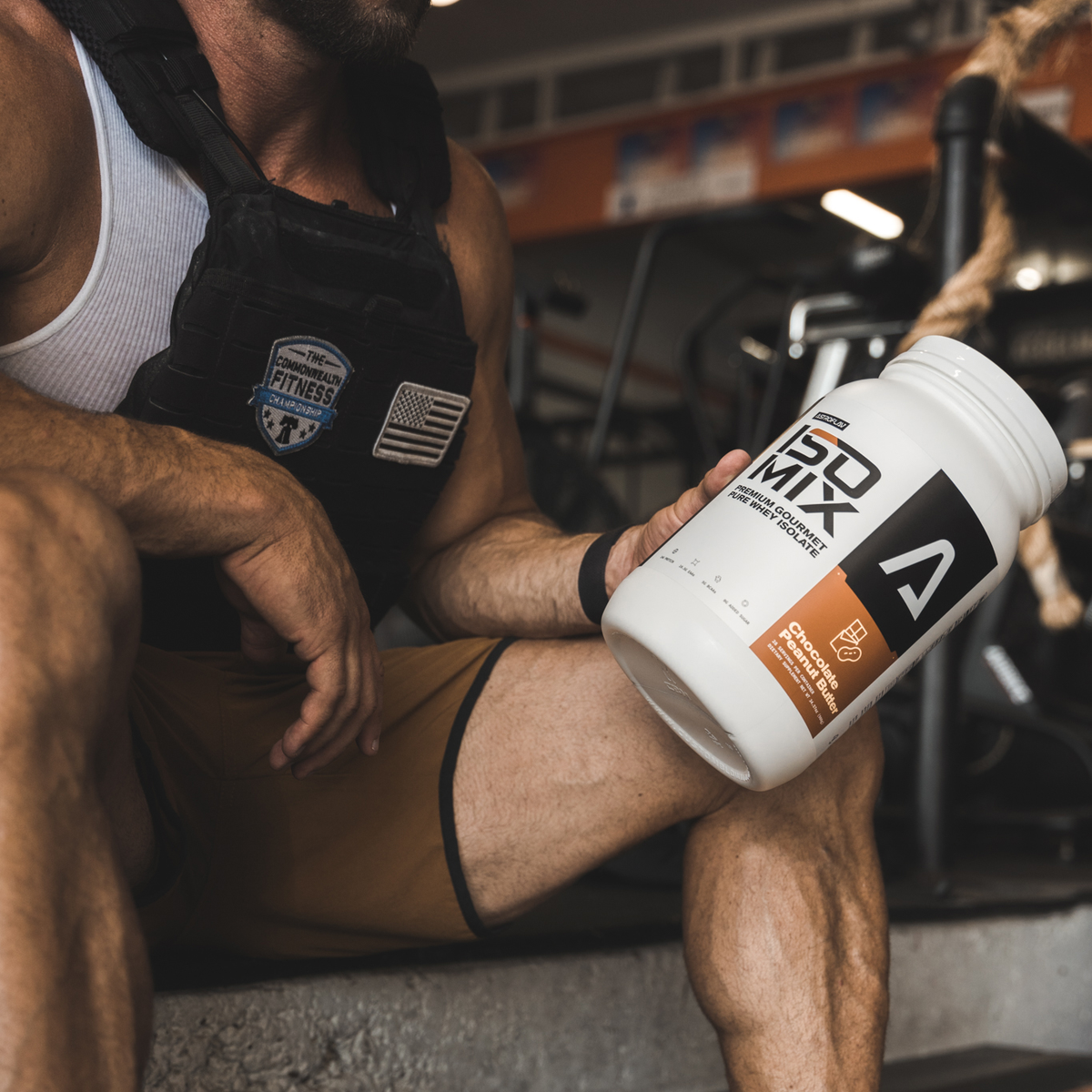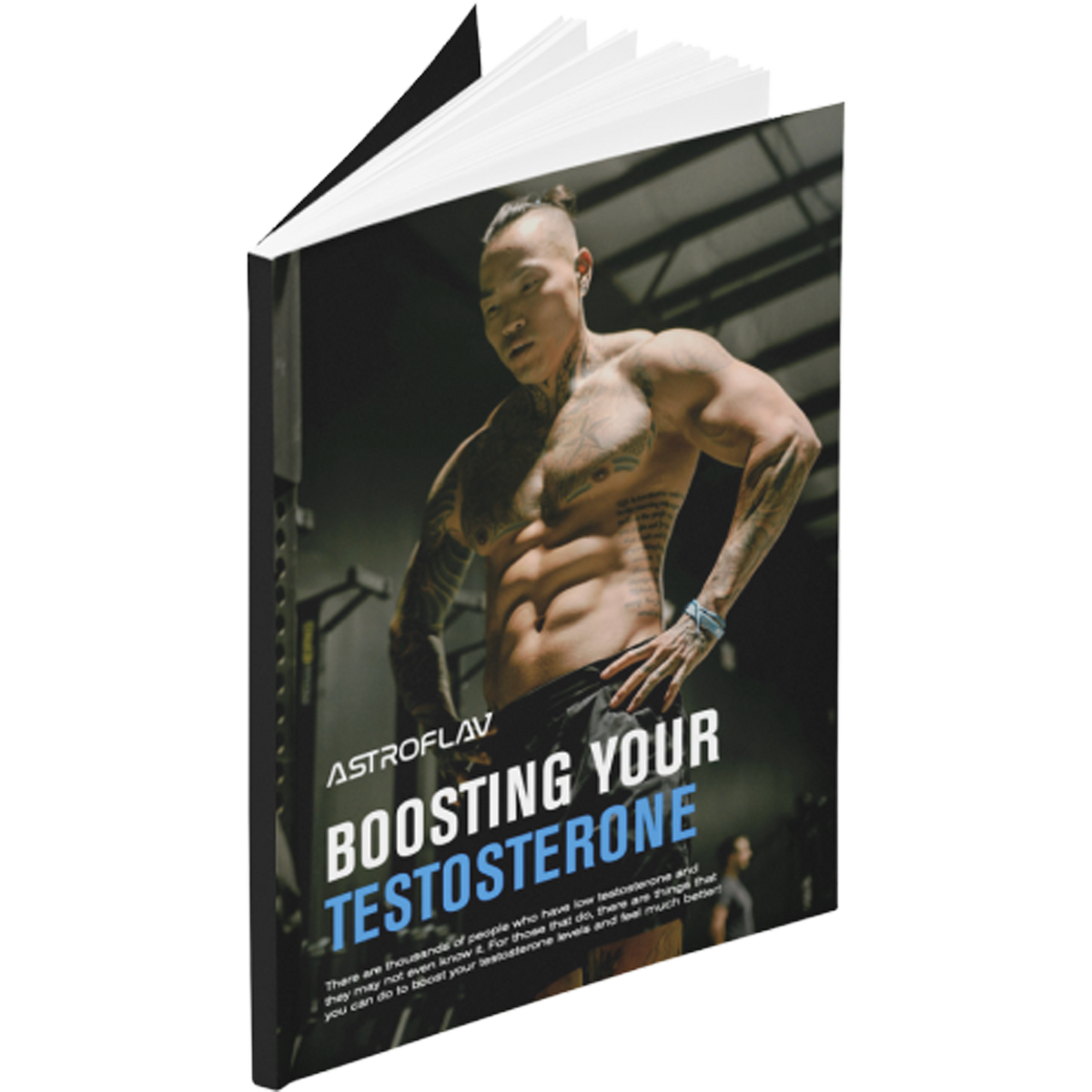Can Exercise Increase Your Testosterone?
Learn how to increase your testosterone through exercise!
Did you know that regular exercise can improve your testosterone? However, not all exercise is created equal and some styles may benefit your T-levels more than others... Along with the many benefits that exercising regularly provides, increased testosterone is our main focus today! Keep reading to learn all things exercise and T-related!
What is Testosterone?
Testosterone is a dominant male sex hormone that is important for sexual function, fertility, muscle mass, and disease risk. Having low testosterone, otherwise known as "low T," you may be affected by erectile dysfunction, lack of sleep, poor mood, and reduced sex drive.
There are a handful of reasons as to why testosterone levels may lower. The number one reason being age. As we age, testosterone levels will naturally decline whether we can help it or not. The Urology Care Foundation states that roughly 20% of men in their 60s will have low testosterone levels and that percentage has shown to rise as years go on.
Other factors contributing to low testosterone levels may include certain medications, high body fat levels, and some health related diseases (Nassar, 2023). Additionally, studies have found that a diet full of ultra-processed foods and low in essential nutrients may have lowering effects to testosterone (Kurniawan & Hsu, 2021).
Ensuring that testosterone levels are at optimal levels will benefit your sexual and reproductive health as well as overall well-being. Luckily, there are many foods, vitamins, and minerals to incorporate into your diet to increase T-levels naturally!
If you have low testosterone levels and are looking for ways to give them a boost, this article is for you. Keep scrolling to learn more!
The link between exercise and testosterone
Whether you're an athlete, gym rat, or just an average Joe, healthy testosterone levels are important to have throughout your life. Testosterone is important to both men and women in regard to sexual health, mood, energy, and muscle mass and strength.
Although testosterone is known for being the dominant sex hormone in men, both men and women have testosterone production, just different amounts.
For men, testosterone is produced in the testicles and contributes to growth in facial and pubic hair, gaining more muscle, and improving sperm health.
For women, lower amounts of testosterone are produced in the ovaries and combined with estrogen, testosterone helps with reproductive health, bone mass, and increased sex drive.
Additionally, testosterone levels fluctuate throughout the day, says Jamin Brahmbhatt, M.D. "You have two peaks: one in the morning and another in the afternoon... After working out, your levels might rise for about an hour, but then they go back to your normal level." (Sweeney, 2023).
Exercising regularly is important for both our physical and mental health. Interestingly enough, exercise can also impact our testosterone levels; however, all exercise is not created equal in this regard. Some exercise supports T-levels, while some styles of exercise may hinder testosterone production. Keep scrolling to learn how exercise affects testosterone levels!
How exercise affects testosterone levels
Exercise is a key factor that can impact testosterone levels. That said, certain types of exercise may contribute to increasing testosterone levels, while other styles of exercise may actually decrease T-levels. Additionally, the intensity and duration of your workouts can also affect testosterone.
Dr. El-Zawahry, a urologist from the University of Toledo Medical Center, states that weightlifting in specific can temporality boost testosterone, but may not lengthen the surge (Sweeney, 2023). He states that body composition and fitness levels also factor into how exercise impacts testosterone levels.
Correspondingly, a 2016 study found that regular exercise for men with obesity did more to increase their testosterone levels compared to weight loss. "People higher in weight and higher percentage of body fat and are likely to have low testosterone (Sweeney, 2023).
Another interesting study reveals that subtle, but noticeable increases in testosterone can be induced by resistance exercise. The study states that testosterone concentration was elevated directly following heavy resistance exercise in men; therefore, concluding a healthy increase in T-levels (Vingren, 2010).
Finally, research concludes that healthy or heightened T levels contributes to building muscle mass and increasing strength compared to low or slightly low levels.
Best exercises to increase testosterone
As previously mentioned, testosterone levels are affected by different types of exercise. The two main exercise styles to improve T-levels are resistance training and high-intensity interval training (HIIT).
Resistance training:
Resistance training, otherwise known as weight lifting or strength training, has been proven by research to help increase short-term and long term testosterone levels. Dr. Anthony Hackney, an exercise physiology professor at the University of North Carolina, states that the greater the intensity and greater volume of the exercise, the more likely to elevate testosterone (Sweeney, 2023).
A 2016 study found that resistance training with large muscle groups, like chest and glutes produced the largest testosterone response. That said, research also shows that when weight-training, it is best to minimize rest period for the best improvement to T-levels.
Some exercise you may want to consider when performing strength-based exercises are:
Back squats
Deadlifts
Bench Press
Row
Pull-ups
Lunges
Lat Pull Downs
High intensity interval training (HIIT):
HIIT is another style of exercise that may boost testosterone levels. However, this is only true for men as HIIT has been shown to reduce testosterone for women.
A study done in 2014 found that HIIT exercise has been linked to an increase in testosterone levels in men. In addition, HIIT has been characterized to increase both heart rate and hormonal response by performing the same exercise, load, and reps of each exercise.
Another interesting study found that HIIT consisting of 90 seconds of intense treadmill running with 90-second recovery periods boosted free testosterone levels more significantly than running for 45 minutes straight with no recovery intervals (Hackney, 2012).
Some exercise examples to add to your high-intensity interval training (HIIT) are:
Burpees
Box jumps
Sprints
Plank jacks
Ladder drills
High knees
Jumping lunges
Does exercise increase testosterone in women?
Although women have significantly lower levels of testosterone than men, testosterone plays a key role in the development and maintenance of muscle mass, strength, and energy levels.
Now, you may have heard that weight-training increases testosterone in women; however, rest assured there is no profound evidence that supports this theory.
Too much exercise can actually lower testosterone in both men and women. Going hand in hand, high intensity training, such as HIIT or long distance running, has been shown to reduce testosterone levels in women. However, in some cases, high-intensity training may be a significant way to lower testosterone if levels are elevated or severely high.
The Takeaway:
Testosterone is an important hormone for both men and women. Healthy T-levels are important to keep in check for both men and women; they contribute to increased mood, energy, sexual health, and maintaining muscle mass.
We know that exercise is important for our overall health, but it is important to keep in mind the impact that it has on testosterone levels. If you're looking to boost your own testosterone levels, exercise is one of the many factors to increase them naturally.
Resistance training and HIIT can both be beneficial to help boost T levels, specifically in men. Exercises such as weight-training and interval sprints are both examples of exercise that can contribute to higher testosterone.
It's important to keep in mind that over-training may be harmful to women's testosterone levels as female hormones differ than males.
Looking for other ways to increase testosterone naturally? Try Elevated, AstroFlav's safe and effective testosterone booster!
ASTROFLAV ELEVATED
Do you want to increase your drive? Improve your strength and endurance? Create lean muscle mass? No matter your desire, Elevated™ can take care of it all.
These combination of ingredients have even been discussed on an episode of The Joe Rogan Experience podcast. Specifically about the power of Fadogia Agrestis and Tongkat Ali, and how two ingredients can increase testosterone by a mile. Check out the episode here.
Tongkat Ali is designed to take your strength and power to the next level with its ability to increase testosterone.
KSM-66 can enhance muscle mass and muscle strength, and decrease body fat in conjunction with resistance training.
Fadogia Agrestus can increase levels of testosterone in the blood within five days of oral administration. It also supports healthy male performance and function throughout the body.
Studies
ASTROFLAV ELEVATED
Do you want to increase your drive? Improve your strength and endurance? Create lean muscle mass? No matter your desire, Elevated™ can take care of it all.
These combination of ingredients have even been discussed on an episode of The Joe Rogan Experience podcast. Specifically about the power of Fadogia Agrestis and Tongkat Ali, and how two ingredients can increase testosterone by a mile. Check out the episode here.
Tongkat Ali is designed to take your strength and power to the next level with its ability to increase testosterone.
KSM-66 can enhance muscle mass and muscle strength, and decrease body fat in conjunction with resistance training.
Fadogia Agrestus can increase levels of testosterone in the blood within five days of oral administration. It also supports healthy male performance and function throughout the body.
Studies
At AstroFlav, we want the best for our customers. It is our goal to help everyone achieve their fitness goals and steer them in the right direction with trust-worthy advice AND trust-worthy supplements!
RESOURCES
Sweeney, E. (2023, February 12). This is how exercise actually affects your testosterone. Men’s Health. https://www.menshealth.com/health/a42758649/does-working-out-increase-testosterone/
Vingren, J. L., Kraemer, W. J., Ratamess, N. A., Anderson, J. M., Volek, J. S., & Maresh, C. M. (2010). Testosterone physiology in resistance exercise and training: the up-stream regulatory elements. Sports medicine (Auckland, N.Z.), 40(12), 1037–1053. https://doi.org/10.2165/11536910-000000000-00000
Hooper DR;Kraemer WJ;Focht BC;Volek JS;DuPont WH;Caldwell LK;Maresh CM; (n.d.). Endocrinological roles for testosterone in resistance exercise responses and adaptations. Sports medicine (Auckland, N.Z.). https://pubmed.ncbi.nlm.nih.gov/28224307/
https://www.ncbi.nlm.nih.gov/pmc/articles/PMC4706091/
Hackney, A. C., Hosick, K. P., Myer, A., Rubin, D. A., & Battaglini, C. L. (2012). Testosterone responses to intensive interval versus steady-state endurance exercise. Journal of endocrinological investigation, 35(11), 947–950. https://doi.org/10.1007/BF03346740





